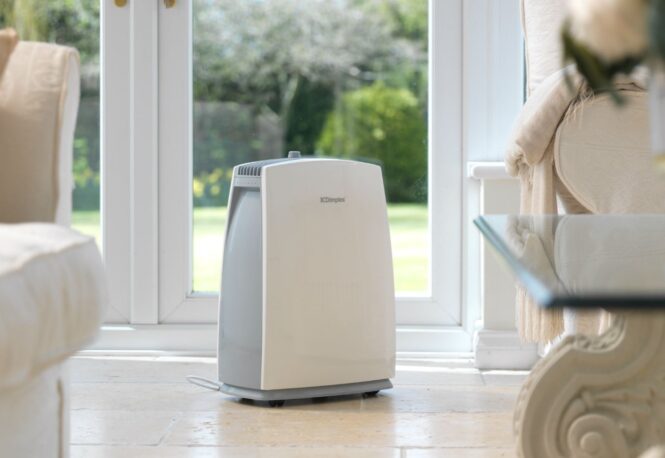As summer approaches and the weather starts to warm, you’ll find your house becoming warmer and sometimes humid, depending on where you live. Sure, a lot of people enjoy the warm weather, but they can’t always predict how the humid air will affect their house. As for those who loathe enduring the heat waves in their houses, simply avoid spending time there and go outside to enjoy the less humid air of the outside world.
While this is a great solution, it’s not always practical, especially now that we’re all forced into quarantine. Finding methods that will make your house feel cool and fresh is essential. In this article, we offer a few suggestions that you’ll surely find helpful.
Spray-Foam Insulation
Any cracks, gaps, or holes in the ceiling is an open invitation for air, moisture, or rain to get inside your house without you knowing, and although there are multiple methods with which you can insulate these gaps, spray foam insulation has outperformed them all. If you click here, you’ll find how effective spray foam is in the roof and exterior structural applications. Since moisture can accumulate in these locations and cause mildew and mold and weaken the house structure, spray-on polyurethane foam will fill those gaps and strengthen the roof and add to its ability to resist wind and pressure. Spray foam can be an excellent damper for noise, so if you live close to a busy road, spray foam insulation will keep you free of both moisture and noise pollution.
Use Dehumidifiers

Keeping the air inside the house dry in a humid climate can be difficult, but using dehumidifiers can certainly save you the trouble when addressing your humidity problem. Dehumidifiers will reduce humidity levels in your house, which, in turn, will reduce the chances of spreading allergens such as dust mites, mold, or mildew. Allergens usually emit rotten odors in your house, so by protecting your house against them, you will protect it from foul odors as well. Dehumidifiers will also run quietly;you won’t have to worry about a constant humming noise in the background if you want to enjoy a quiet day. In addition to this, the air in your home will be cleaner, making it easier to breathe. It will also be dry, which will make drying your clothes an easy job. Because dehumidifiers reduce dust particles in the air, you won’t find yourself cleaning as often, too.
Get Indirect Sunlight
Direct sunlight will naturally increase the temperature in your house, making it difficult to keep the house cool. To avoid this, you’ll simply have to use curtains, blinds, or reflective window panels to avoid the warmth. Of course, this doesn’t mean you have to live like a vampire. You can still enjoy indirect sunlight from east-facing windows, west-facing windows, and rooms that get light from the south. Tinted window panes can also dim the light to some extent and offer some protection against UV radiation. This can be a better option if you’re looking for more protection.
Choose a White Roof

The black materials used to make your roof can make the air inside your house feel 100 degrees hotter than it actually is. On the other hand, white roof materials will reflect away the sun instead of absorbing it, keeping your house cooler on summer days. So, it’s only natural that you would invest in a white roof. However, if the expenses of installing a brand new roof are too high, you can install white roof panels or apply a white paint coating to it.
Choose the Right Ceiling Fans
Usually, house owners will install ceiling fans in rooms where family members spend most of their time, like the kitchen, bedrooms, or living room. But where to install a ceiling fan is not the only thing you should worry about. Picking a fan of the right size for your room will affect how much it can spread cool air. If you’re not sure which ceiling fans to choose for your house, make sure to consult a specialized service that is more knowledgeable about ceiling fan types, and they will tell you which fans to install in different rooms in your house. If you already have fans installed, you can follow these tips to increase their effective cooling:
- Run the fans anticlockwise on the highest setting. This method will force the air down and create cooler conditions. In winter, running them clockwise on the lowest setting will force warmer air down.
- Keep the fans clean, not just for hygienic purposes, but to increase the effectiveness of the motor. Dirt will accumulate on the blades, create air resistance, and slow them down, while dust on the motor will make it overheat and may even damage it.
- Fix the wobbling fans as any imbalances won’t make the fan blades move normally, so it won’t cool as effectively. You can do this by tightening any loose screws or replacing them if they’re broken or rusty.
Vent the Attic

Since they’re the uppermost spaces in our houses, attics can be the warmest parts and if there’s no proper ventilation, the heat will eventually be trapped and heat the whole house. If you notice that your attic is 20 or 30 degrees warmer than the rest of the house, then this is a sign you should improve ventilation there. To do this you can use roof-mounted fans, which would be installed on the roof exterior, but you’ll have to cut a space for it in the roof. This can be challenging, but it will create a stronger suction. Another option is a gable mount fan. This one is easier to install; you simply have to attach it to the existing vents in your attic.
Keeping the house cool and fresh can certainly be challenging. In addition to this, most air conditioning systems are costly, and if your house structure was built before the 1950s, then there may be a chance you won’t be able to install one. Following these techniques that are equally effective in cooling your house is a must.
 Imagup General Magazine 2024
Imagup General Magazine 2024



